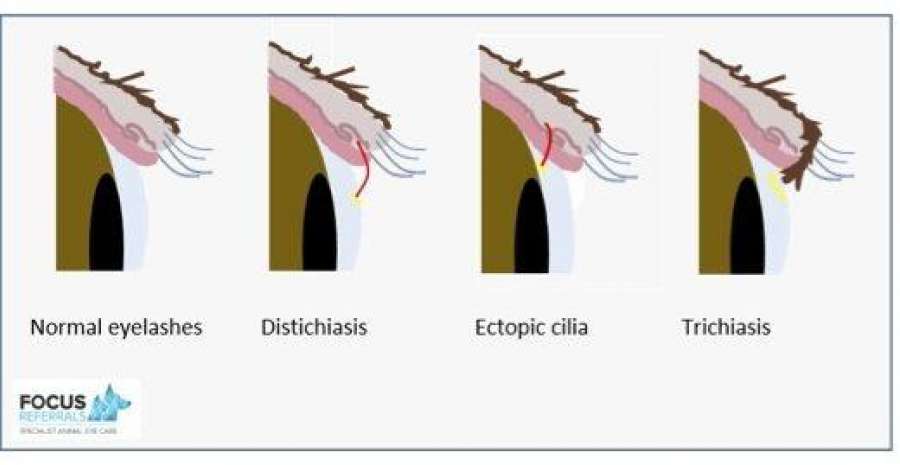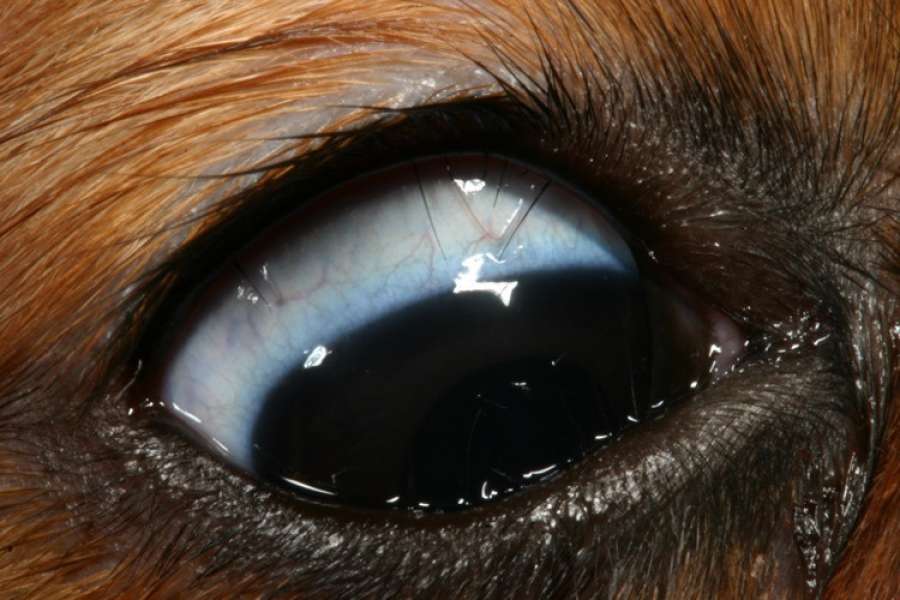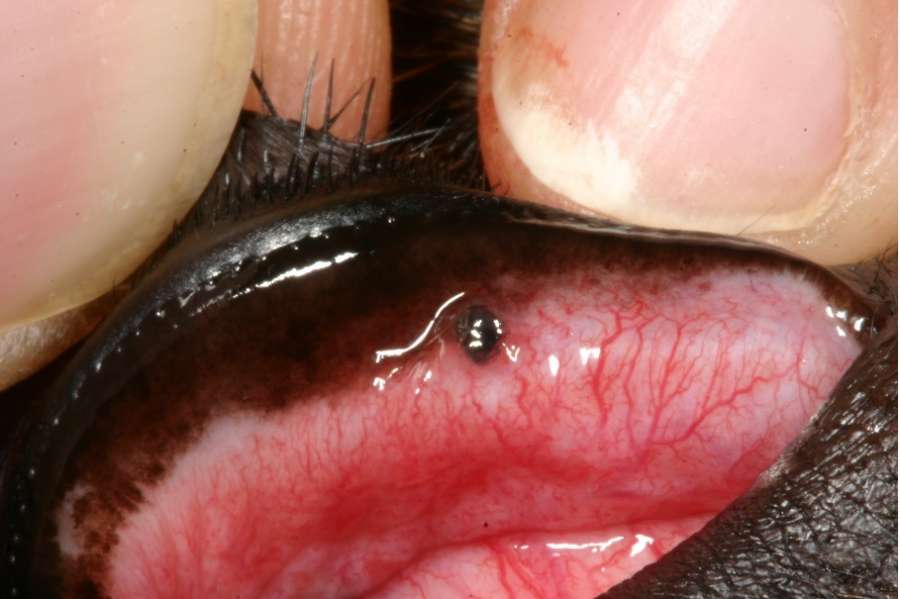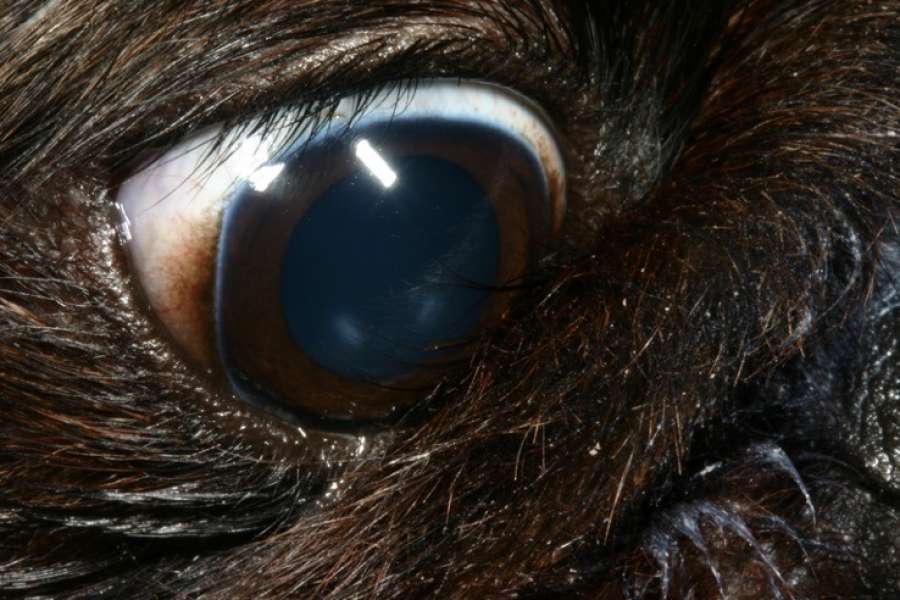Eyelash disorders
Dogs, unlike us, only have eyelashes along their upper eyelids. The purpose of eyelashes is to catch dust and debris preventing delicate eye tissue from becoming irritated. Normal eyelashes grow out of the eyelid and point away from the cornea (clear surface of the eye). If eyelashes grow from the wrong place or point in the wrong direction, they can rub the cornea causing painful ulceration (open sores).

Distichiasis is when extra eyelashes grow behind normal lashes from oil glands (Meibomian glands) in the eyelid.

Ectopic cilia are lashes that grow through the conjunctiva (lining of the eyelids).

Trichiasis is when normal fur or eyelashes grow too long or in the wrong direction. It often affects dogs with excess, haired skin around their faces.

Signs of eyelash disorders
Sometimes extra eyelashes don’t cause a problem but any that do rub on the cornea may cause:
- Sore eyes (many dogs blink a lot)
- Discharge from the eye
- Red eye
- Corneal ulceration (sometimes visible as a grey area on the cornea)
Diagnosing eyelash disorders
It’s not always easy to spot extra eyelashes with the naked eye. Your vet will use an ophthalmoscope (illuminated magnifier) to find and record where any extra lashes are. They may drop a coloured dye onto your dog’s cornea to check for ulceration.
At Focus, we have specialist equipment to check all parts of your dog’s eyes in great detail.
What treatment is available?
We can permanently remove your dog’s problematic eyelashes using a combination of techniques. The exact method depends on where the eyelashes are and whether your dog has more than one eyelash disorder.
At Focus, our specialist ophthalmologist uses a state-of-the-art operating microscope to identify and accurately treat each eyelash. The main methods we use are surgical removal of the eyelash with its root and cryotherapy (freezes and destroys the eyelash root).
Surgery at Focus
Your dog will spend the day with us as an inpatient. We fully examine your dog on the morning of surgery to make sure he/ she is well enough for their operation.
Your dog will be asleep under a general anaesthetic during the procedure. Our highly trained nurses monitor your dog throughout and while they recover.
Your dog will need medication (eye creams and pain relief) for a few days after surgery. We’ll check your dog around a week later to make sure everything is healing normally.
Possible complications
There are very few complications arising from treating eyelash disorders and most patients feel much more comfortable straight away. Occasionally, stubborn eyelashes need a repeat treatment but for most dogs, usually once is enough.
If you’d like to find out how Focus can help treat your dog’s Eyelash disorders, please ask your vet to get in touch with us.

